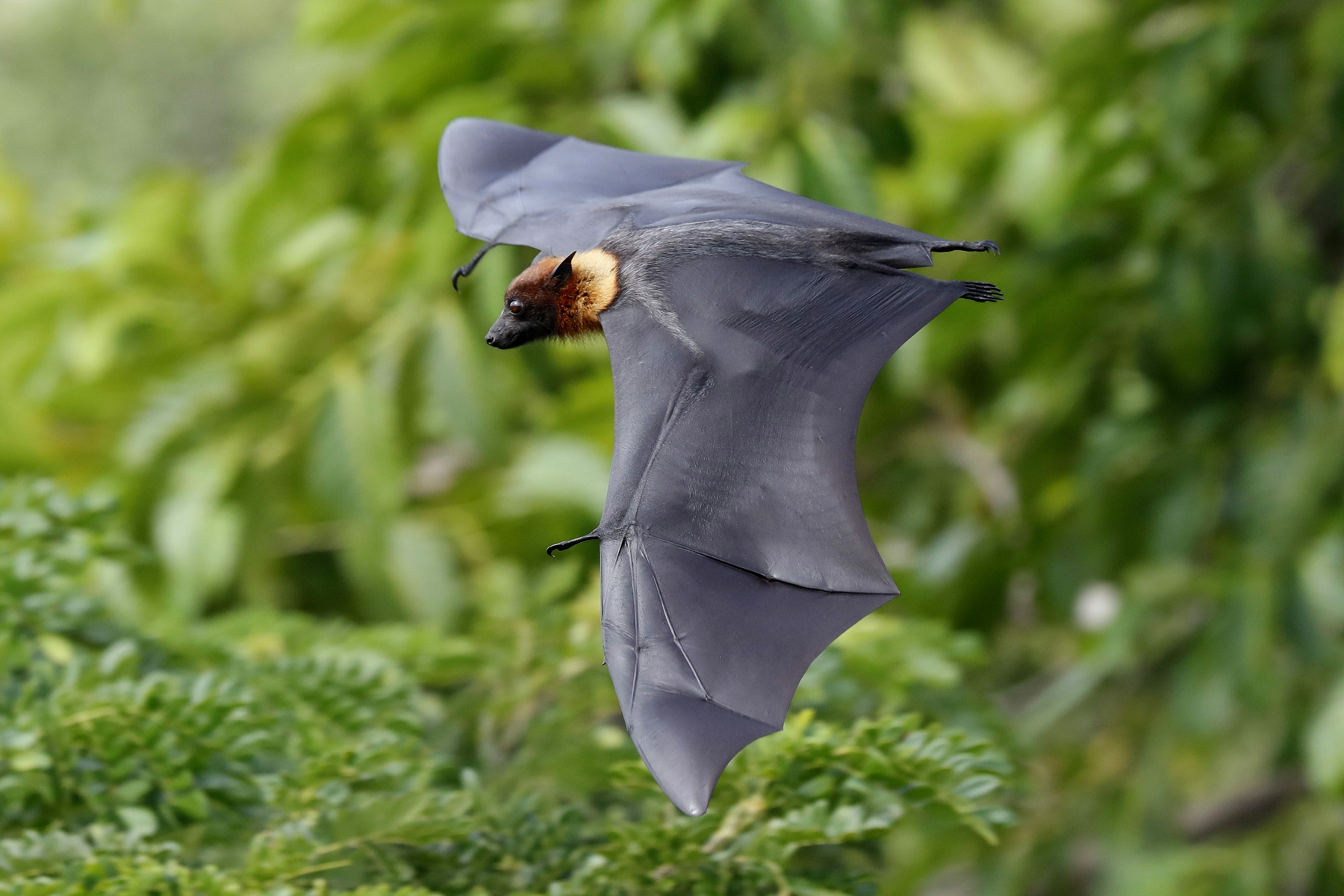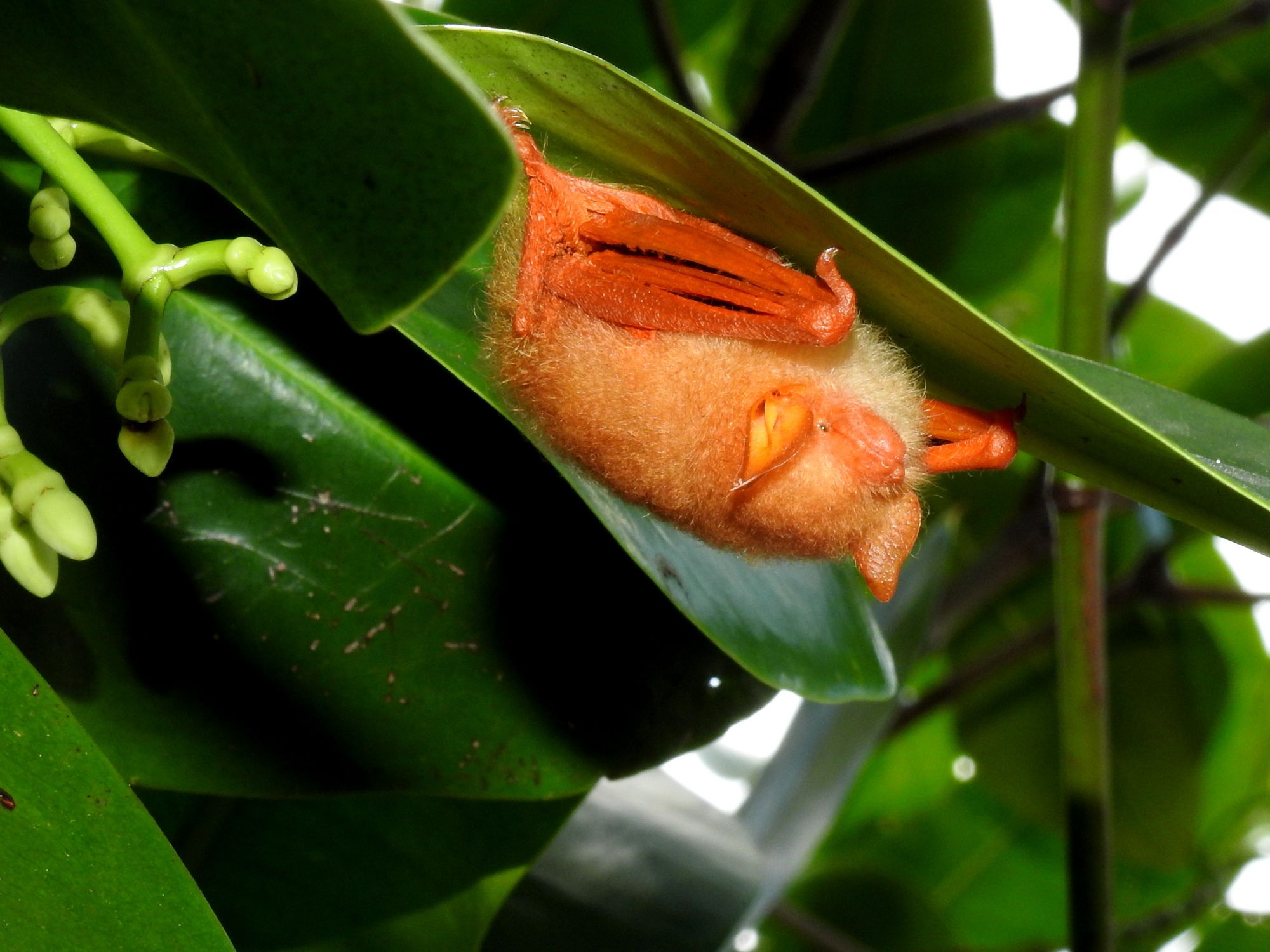- Bats play crucial roles in biodiverse ecosystems the world over, yet they’re often overlooked in conservation planning.
- New research from Vietnam indicates the existing network of protected areas fails to adequately safeguard the small flying mammals, risking continued population declines.
- The study identifies priority areas where Vietnam’s efforts to expand its protected area network would most benefit bats in the central highlands, the western central coast and the northwest regions.
- Experts say a lot could be achieved for bats in Southeast Asia by ending the illegal wildlife trade, particularly the “frivolous” international ornamental bat trade.
Furry, feisty, and often on the wing, bats are tricky to observe, let alone to protect. Some species hibernate deep in ca…
- Bats play crucial roles in biodiverse ecosystems the world over, yet they’re often overlooked in conservation planning.
- New research from Vietnam indicates the existing network of protected areas fails to adequately safeguard the small flying mammals, risking continued population declines.
- The study identifies priority areas where Vietnam’s efforts to expand its protected area network would most benefit bats in the central highlands, the western central coast and the northwest regions.
- Experts say a lot could be achieved for bats in Southeast Asia by ending the illegal wildlife trade, particularly the “frivolous” international ornamental bat trade.
Furry, feisty, and often on the wing, bats are tricky to observe, let alone to protect. Some species hibernate deep in caves or tree cavities for months at a time; many migrate long distances in search of food, shelter and potential mates. Their diversity of lifestyles often makes it difficult to include all bats within conservation plans.
Designing and locating protected areas with bats in mind is a particular challenge. Numerous studies have found the small winged mammals are frequently overlooked in conservation areas across many biodiverse parts of the world, such as Africa, Brazil, and now, Vietnam.
Only about 6% of the land where bats are found in Vietnam is included within its existing protected area network, according to a new study published in *PLOS ONE. *
Nearly one-third of all bat species known from Asia are found across Vietnam’s remaining tropical forests, mountain valleys and cavernous limestone karst formations, where they face a slew of threats, with many species in decline.
The study, by a team of biologists from Vietnam, Hungary and Taiwan, used spatial distribution models to analyze to what extent Vietnam’s protected areas encompass the range of 81 species of bats, including insect eaters, fruit eaters, and eight globally threatened species.
They found the range of 78 species falls largely outside of the country’s protected areas, with threatened species particularly poorly represented.
Le Quang Tuan, a biologist at National Taiwan Normal University and lead author of the study, told Mongabay that overlooking bats in conservation planning in Vietnam is a serious concern.
“Southeast Asia’s bat fauna is characterized by a high diversity of species, many of which are specialists reliant on specific habitats like primary forests and limestone karst caves,” Le Quang said. “When these habitats are not adequately protected, [neither are] the species that depend on them.”
 A Lyle’s flying fox in flight. Image by lonelyshrimp via Wikimedia Commons (CC0 1.0).
A Lyle’s flying fox in flight. Image by lonelyshrimp via Wikimedia Commons (CC0 1.0).
Globally, habitat loss is the major driver of bat population declines, closely followed by disturbance of their roosting and foraging sites, including caves and trees. In Southeast Asia, studies have forecast that nearly one-quarter of the region’s bat species could disappear by 2100 if current rates of forest loss persist. Overhunting for consumption and the illegal wildlife trade, coupled with environmental changes driven by climate warming, are further crises facing many species.
Ignoring bats’ ecological needs also risks robbing ecosystems of the significant role they play in many ecosystems. In tropical forests, some plants and trees, such as figs, rely on bats for pollination and seed dispersal, boosting the forest’s natural regeneration potential.
Frugivorous bats have also been shown to pollinate commercial fruits like durian, mangoes, cacao and agave, while insectivorous and nectivorous bats provide economically important pest-control, pollination and nutrient-cycling services for vital food crops, such as rice.
With efforts underway to expand protected areas across the world, the study identified key areas where Vietnam’s network of protected areas could be expanded to improve the conservation outlook for bats.
Le Quang and his colleagues looked at these options under two conservation scenarios. The first aligns with national targets that aim to achieve 9% protected area coverage by 2030 under Vietnam’s National Strategy on Biodiversity. The second corresponds to the Global Biodiversity Framework’s goal of conserving and effectively managing 30% of lands by 2030.
The researchers identified forests in Vietnam’s central highlands, western central coast and northwest regions as priority areas for expansion. These parts of Vietnam are well-known mammal hotspots, the study notes, where the biota of several Asian biogeographical regions meet, such as the Annamite Mountain range, making them ideal for further protection.
Expanding Vietnam’s network of protected areas from the current 5% of its land area to 9% could effectively double the inclusion of bat distribution ranges, the study found. However, proportionally greater benefits could be achieved by protecting 30% of land. It could result in a sixfold increase in bat range coverage and reduce the number of bat species poorly represented in protected areas to just 10.
 A painted woolly bat roosts under a leaf in Indonesia. Image by Abu Hamas via Wikimedia Commons (CC-BY-SA 4.0).
A painted woolly bat roosts under a leaf in Indonesia. Image by Abu Hamas via Wikimedia Commons (CC-BY-SA 4.0).
Joanna Coleman, a Southeast Asian bat specialist and assistant professor at the City University of New York, who wasn’t involved in the Vietnam study, said bats face some very specific threats in Vietnam and Southeast Asia more broadly. “Bats in Southeast Asia are inordinately exploited for trade purposes,” she said. “There’s also the problem of guano harvesting and cave tourism [associated] with karst habitats [and] exploitation specifically of karst, whether [through] mining or other uses.”
While protected areas can go some way to addressing these types of threats, the key to best protecting bats lies in ending their illegal trade, said Coleman, who also co-chairs the Bat Trade Working Group at the IUCN, the global wildlife conservation authority.
Halting the “frivolous” ornamental bat trade, which targets species like the painted woolly bat (Kerivoula picta) that already exist at low population densities, would be a good starting point, she said.
This could be achieved by improving enforcement of existing wildlife laws in source and destination countries, Coleman said, as well as including all bats in the appendices of CITES, the global treaty on the international wildlife trade. Currently, only 69 species of bats, mostly flying foxes, are listed on CITES, she noted.
Including more bats on CITES would not only put in place a mechanism to control the international trade, but would also allow for monitoring of the trade to gauge its impact on wild populations, a vital step for a group of animals we still don’t know much about. Despite the importance of bats to the ecosystems in which they live, more than one-third of the world’s bat species assessed by the IUCN are either threatened with extinction or their risk status is unknown because of a lack of data.
Le Quang said that since bats depend on forest cover and suitable roosting sites, restoring and protecting these habitats should be paramount. Conservation actions could include restoration initiatives that focus on creating diverse forests that provide foraging and roosting habitats for bats, and minimizing human disturbance around Vietnam’s popular and scenic limestone karst caves.
The authors note in their study that Vietnam’s plans to expand its protected areas could be optimized by applying their spatial prioritization approach to a wider range of conservation species. But when it comes to bats, they recommend conservation managers focus on several threatened and narrowly distributed species, including the East Asian tailless leaf-nosed bat (Coelops frithii)*, *Hodgson’s bat (Myotis formosus), the large flying fox (Pteropus vampyrus), Lyle’s flying fox (*P. lylei), *and the trade-prone painted woolly bat.
Banner image:* A Lyle’s flying fox. Image by lonelyshrimp via Wikimedia Commons (CC0 1.0).*
Carolyn Cowan* is a staff writer for Mongabay.*
Citations:
Smith, A., Schoeman, M. C., Keith, M., Erasmus, B. F., Monadjem, A., Moilanen, A., & Di Minin, E. (2016). Synergistic effects of climate and land-use change on representation of African bats in priority conservation areas. Ecological Indicators, 69, 276-283. doi:10.1016/j.ecolind.2016.04.039
Pessoa da Silva, F., & De Marco Júnior, P. (2023). The role of protected areas in safeguarding bat diversity in Brazil. Biodiversity and Conservation, 32(8-9), 2909-2924. doi:10.1007/s10531-023-02635-6
Tuan, L. Q., Tu, V. T., Tuan, T. A., Thong, V. D., Son, N. T., Luong, N. T., … Tuanmu, M. (2025). Habitat prioritization for bat conservation: A case study in Vietnam. PLOS ONE, 20(9), e0331094. doi:10.1371/journal.pone.0331094
Brook, B. W., Sodhi, N. S., & Ng, P. K. (2003). Catastrophic extinctions follow deforestation in Singapore. Nature, 424(6947), 420-423. doi:10.1038/nature01795
Boyles, J. G., Cryan, P. M., McCracken, G. F., & Kunz, T. H. (2011). Economic importance of bats in agriculture. Science, 332(6025), 41-42. doi:10.1126/science.1201366
Sheherazade, Ober, H. K., & Tsang, S. M. (2019). Contributions of bats to the local economy through durian pollination in Sulawesi, Indonesia. Biotropica, 51(6), 913-922. doi:10.1111/btp.12712
Wanger, T. C., Darras, K., Bumrungsri, S., Tscharntke, T., & Klein, A. (2014). Bat pest control contributes to food security in Thailand. Biological Conservation, 171, 220-223. doi:10.1016/j.biocon.2014.01.030
See related story:
‘Senseless’ U.S. trinket trade threatens distinctive Asian bat, study shows
FEEDBACK: Use this form to send a message to the author of this post. If you want to post a public comment, you can do that at the bottom of the page.